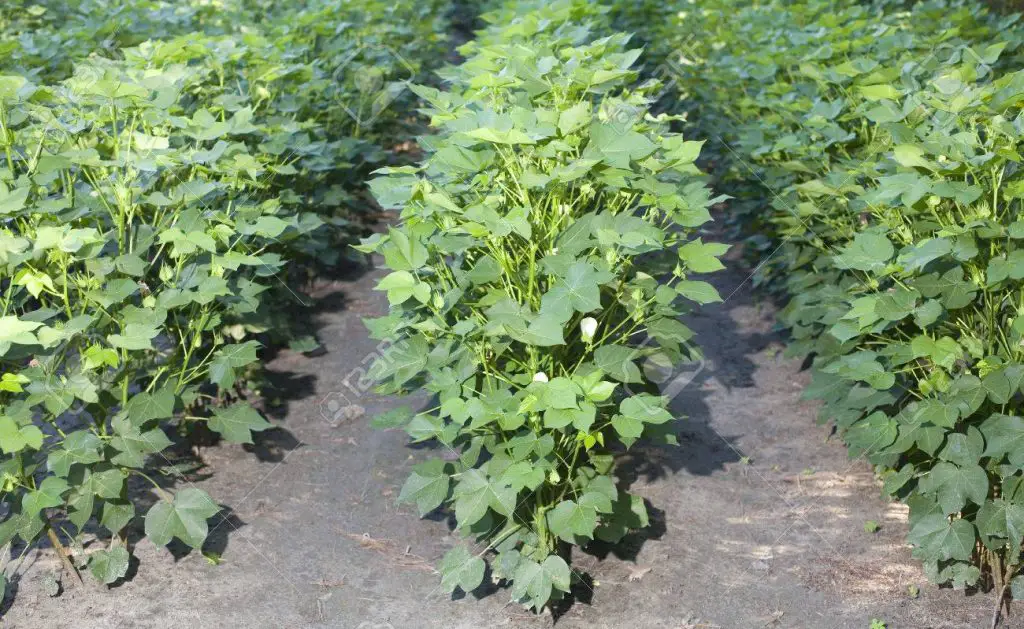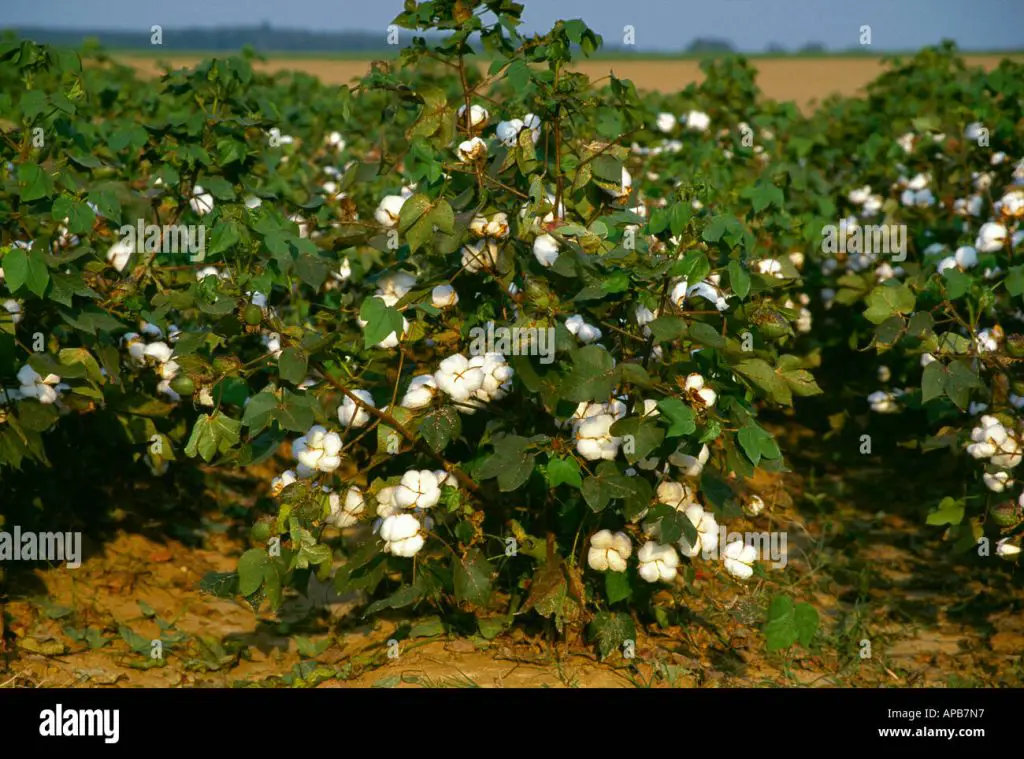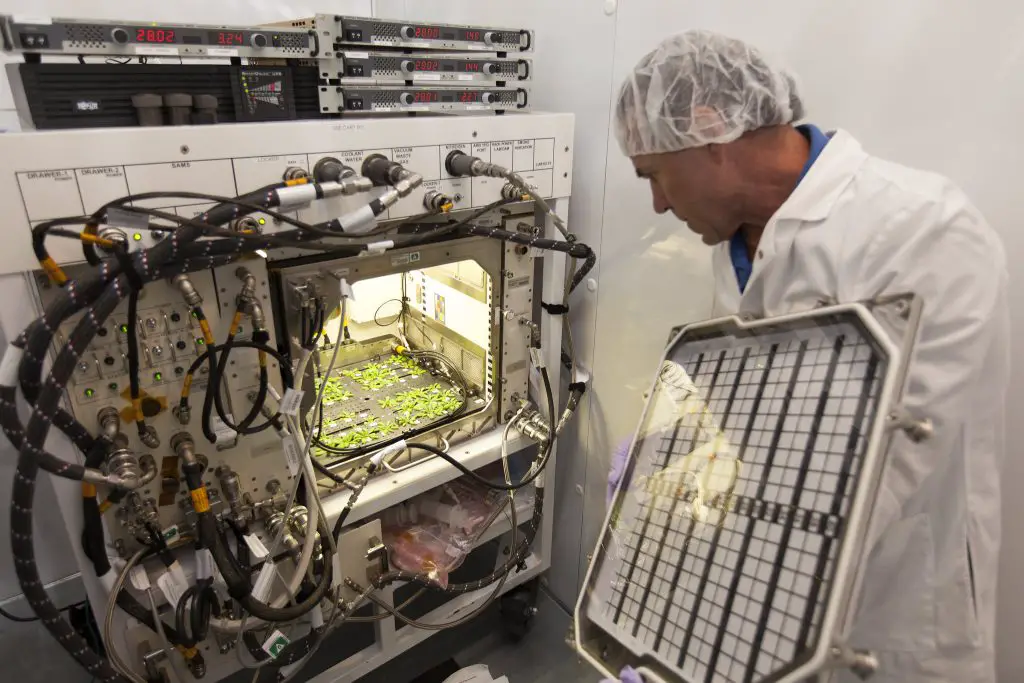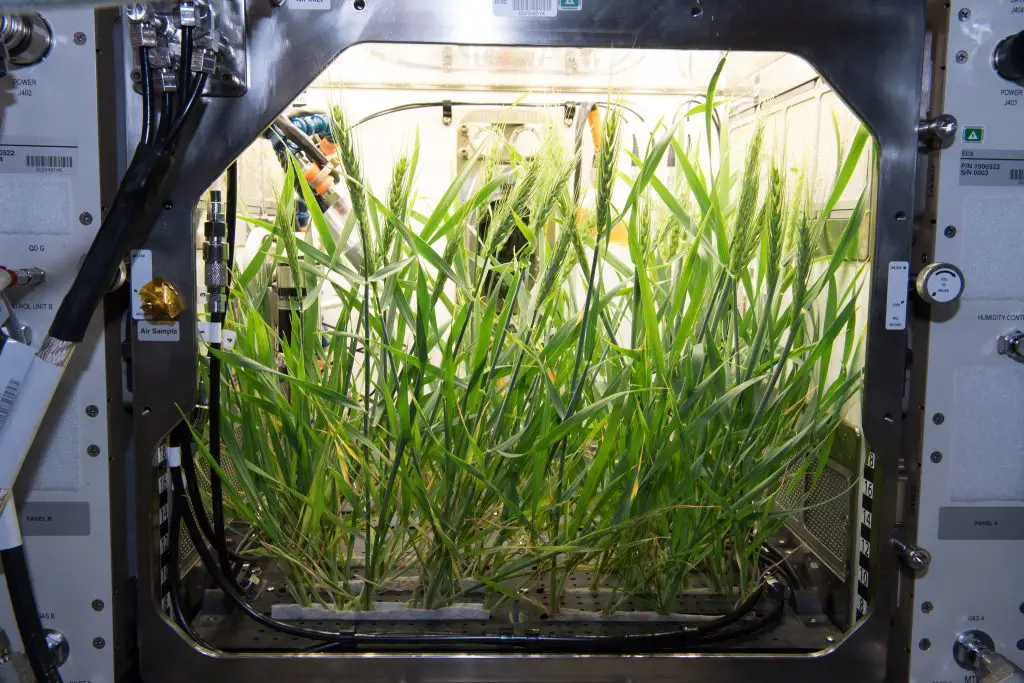A cotton plant looks like a small shrub with green leaves and multiple branches before it blooms. Before blooming, a cotton plant appears as a compact shrub with green leaves and several branches.
As a member of the malvaceae family, this plant features a woody stem and broad, lobed leaves. It typically reaches a height of around 3-6 feet. The cotton bolls, which contain the fibers used to produce cotton, appear after the plant matures and blooms.
At this stage, the flower buds develop into large, white or yellow flowers. Understanding the appearance of a cotton plant before it blooms is crucial for farmers and researchers to monitor its growth and determine the optimal time for harvesting the cotton fibers. By examining its characteristics, these individuals can ensure proper care and maximize the yield of this valuable crop.

Credit: hundredpercentcotton.com
Understanding The Structure Of A Cotton Plant
The structure of a cotton plant is fascinating and unique. Understanding the different parts of a cotton plant is essential to appreciate its growth and blooming process. In this section, we will explore the leaves, stems, and branches of a cotton plant, as well as how it grows from a seed.
Different Parts Of A Cotton Plant:
- Leaves: The cotton plant boasts broad, green leaves that are heart-shaped. These leaves play a crucial role in capturing sunlight for photosynthesis, aiding in the plant’s growth and development.
- Stems: Cotton plant stems, known as stalks, are sturdy and upright. They provide support for the entire plant and transport water, nutrients, and sugars between various parts.
- Branches: Cotton plants have multiple branches growing from the central stem. These branches extend outward, creating a bushy appearance.
How A Cotton Plant Grows From A Seed:
- Germination: The cotton plant begins its journey as a tiny seed buried in the soil. Under favorable conditions, such as adequate moisture and warmth, the seed absorbs water, initiating the germination process.
- Root development: As the seed germinates, a root emerges from it, delving deep into the soil. This primary root anchors the plant and absorbs water and nutrients for growth.
- Cotyledons and true leaves: Once the primary root is established, cotyledons, also known as seed leaves, emerge from the soil. These cotyledons provide nourishment to the developing plant until true leaves form. Gradually, multiple sets of true leaves replace the cotyledons, ultimately shaping the cotton plant’s appearance.
- Stem and branch growth: Concurrently with leaf development, the stem grows vertically, and branches start to form around the central stem. These branches contribute to the plant’s height and volume, preparing it to bear cotton bolls.
- Flowering and blooming: After a period of growth, the cotton plant reaches maturity, producing vibrant flowers. These flowers transform into cotton bolls, which contain the cotton fibers we are familiar with. The blooming of cotton signifies the plant’s readiness for pollination and subsequent seed production.
Understanding the structure of a cotton plant sets the foundation for comprehending its growth and blooming process. With leaves, stems, and branches working in harmony, a cotton plant emerges from a tiny seed, gradually transforming into a bushy, flowering organism.
In the next section, we will delve deeper into the importance of each part in the cotton plant’s lifecycle, shedding light on its remarkable journey from seed to bloom.
Identifying The Pre-Bloom Stage Of A Cotton Plant
Cotton, a widely cultivated plant known for its soft and fluffy fibers, goes through several stages of growth before it eventually blooms. Understanding these growth phases can help farmers and plant enthusiasts identify the pre-bloom stage of a cotton plant.
In this section, we will explore the characteristics of a cotton plant before blooming, how to recognize the vegetative stage, and the visible signs of a cotton plant preparing to bloom.
Characteristics Of A Cotton Plant Before Blooming
- At this stage, the cotton plant primarily focuses on establishing its root system and developing a strong foundation for future growth.
- The plant appears small and bushy in shape with multi-lobed leaves that are slightly hairy to touch.
- The leaves are typically medium to dark green and have a distinct veining pattern.
- The stems of the cotton plant are strong and sturdy, providing support for the developing branches and leaves.
- Before blooming, the cotton plant produces small round buds, also known as square bolls, which are tightly closed and unopened.
Recognizing The Vegetative Stage
- During the vegetative stage, the cotton plant exhibits vigorous growth, primarily focusing on leaf production.
- The plant grows taller, and its branches become more elongated, reaching out to capture sunlight for photosynthesis.
- Leaves continue to develop and expand, creating a dense canopy of foliage.
- The cotton plant leaves are arranged in an alternate pattern along the stem, with a distinct petiole connecting each leaf to the stem.
- The vegetative stage is crucial for the cotton plant’s ability to produce abundant flowers and, eventually, cotton bolls.
Visible Signs Of A Cotton Plant Preparing To Bloom
- As the cotton plant nears the blooming stage, the square bolls begin to show signs of transformation.
- The square bolls gradually enlarge and elongate, resembling tiny green lanterns hanging from the branches.
- These square bolls become more plump and start to soften, indicating that the blooming stage is just around the corner.
- In addition to changes in the square bolls, small yellow flowers may start peeking out from the protective bracts, signaling the imminent arrival of blooming cotton.
Understanding the characteristics, growth patterns, and visible signs of a cotton plant before blooming enables farmers and plant enthusiasts to closely monitor their plants’ progress. By identifying the pre-bloom stage, they can ensure proper care and take necessary steps to optimize cotton plant growth, ultimately leading to a fruitful harvest.
Growth Patterns And Development Of A Cotton Plant
A cotton plant goes through several stages of growth and development before it begins to bloom. Understanding these growth patterns is essential for cotton farmers and enthusiasts alike. In this section, we will explore the stages of growth in a cotton plant’s lifecycle, discuss the factors that influence its development, and emphasize the importance of blooming in the plant’s overall growth.
Stages Of Growth In A Cotton Plant’S Lifecycle
- Germination: The cotton plant begins its journey as a tiny seed, buried in the soil. Under favorable conditions of moisture and temperature, the seed germinates and the first sign of life emerges.
- Seedling stage: As the plant grows, it develops two cotyledon leaves, which are the first set of leaves to appear. These young leaves provide nutrients to the growing plant until it can produce its own through photosynthesis.
- Vegetative stage: In this stage, the cotton plant focuses on leaf and stem development. It starts producing true leaves, elongating its stems, and forming lateral branches. This stage is crucial for the plant to gather enough energy for flowering and fruiting.
- Reproductive stage: This is the stage where the cotton plant shifts its focus from vegetative growth to reproductive growth. It starts forming flower buds, which will eventually develop into cotton bolls. The plant also allocates nutrients towards flowering and fruiting processes.
- Blooming stage: Finally, the cotton plant reaches its much-anticipated blooming stage. The flowers open up in a burst of vibrant colors, attracting pollinators such as bees and butterflies. This stage marks a significant milestone in the cotton plant’s development.
Factors Influencing The Growth Of A Cotton Plant
- Temperature: Cotton plants thrive in warm temperatures between 60 to 95°f (15 to 35°c). Extreme temperatures can hinder their growth and negatively impact yield.
- Soil quality: The fertility and ph level of the soil play a crucial role in a cotton plant’s growth. Well-drained soil with adequate organic matter is ideal for optimal development.
- Water availability: Cotton plants require regular and adequate water supply throughout their lifecycle. Insufficient water can lead to stunted growth and low yield.
- Light exposure: Cotton plants thrive in full sunlight, which is necessary for efficient photosynthesis. Insufficient light can result in weak plants and smaller cotton bolls.
The Importance Of Blooming In The Cotton Plant’S Development
- Pollination: Blooming is a vital stage as it allows for pollination to occur. Pollinators help transfer pollen from the male flower parts (anthers) to the female ones (stigmas), enabling fertilization and seed production.
- Cotton boll formation: The flowers that bloom eventually develop into cotton bolls. These bolls contain the cotton fibers that are harvested for various purposes, such as textile production.
- Seed production: Successful blooming leads to seed development within the cotton bolls. These seeds can be collected for future planting or used for oil extraction and animal feed.
Overall, understanding the growth patterns and development of a cotton plant provides valuable insights for farmers to optimize their cultivation practices. From germination to blooming, each stage contributes to the plant’s journey towards maturity and successful cotton production.
Frequently Asked Questions For What Does A Cotton Plant Look Like Before It Blooms
What Does A Cotton Plant Look Like Before It Blooms?
Before it blooms, a cotton plant resembles a small shrub with green leaves. It grows upright and can reach heights of up to 5 feet. The branches are covered with small buds that will eventually develop into cotton bolls, the fluffy white fibers we associate with cotton.
How Long Does It Take For A Cotton Plant To Bloom?
On average, it takes about 60 to 90 days for a cotton plant to bloom from the time it is planted. However, the exact timing can vary depending on the variety of cotton and the growing conditions. It’s important to provide the plant with plenty of sunlight, warmth, and water to encourage healthy growth and timely blooming.
What Are The Different Stages Of A Cotton Plant’S Growth?
A cotton plant goes through several stages of growth. It starts as a small seedling, then grows into a bushy plant with leaves. Next, it buds and begins to flower, which is followed by the development of cotton bolls. Finally, the bolls mature, and the cotton fibers inside them expand, ready for harvest.
How Many Cotton Bolls Does A Cotton Plant Produce?
A well-nurtured and healthy cotton plant can produce anywhere from 30 to 100 cotton bolls. The number of bolls can vary depending on factors such as the variety of cotton, growing conditions, and the overall health of the plant. Each cotton boll contains multiple seeds surrounded by fluffy cotton fibers used for textile production.
Are Cotton Plants Susceptible To Pests Or Diseases?
Yes, cotton plants are susceptible to a range of pests and diseases. Common pests include aphids, boll weevils, and cotton bollworms, while diseases like cotton root rot and verticillium wilt can affect their health. To prevent damage, it’s important to implement proper pest management practices and regularly inspect the crop for signs of pests or diseases.
Conclusion
Exploring what a cotton plant looks like before it blooms provides fascinating insights into this versatile crop. From its distinctive appearance as a small shrub with broad, ribbed leaves to the formation of bud clusters, the cotton plant undergoes significant transformations before reaching its flowering stage.
Understanding the different growth stages of the cotton plant is essential for farmers and researchers to optimize its cultivation and maximize yield. By monitoring the plant’s growth and health, farmers can implement appropriate management practices to ensure a successful harvest.
Additionally, knowing the visual cues that indicate the nearing blooming stage is important for cotton breeders to develop new varieties with improved traits. Through continual research and advancements in cotton cultivation techniques, we can continue to increase productivity, reduce environmental impacts, and meet the global demand for this remarkable fiber.




